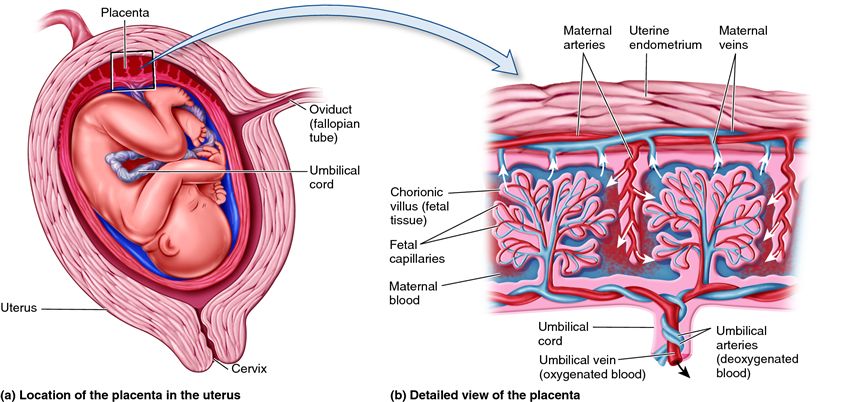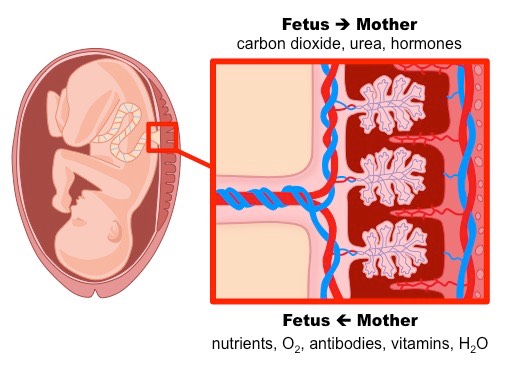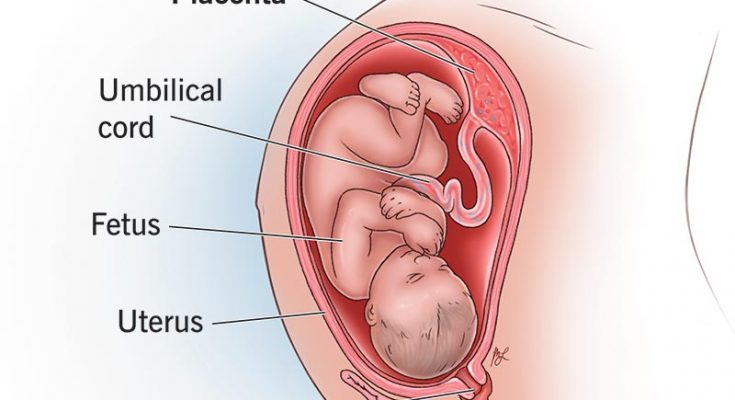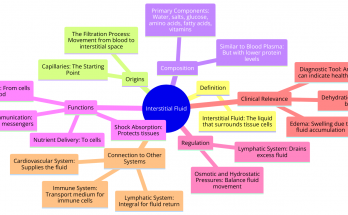Define Placenta
Placenta is the temporary organ for a baby’s life-support system.It contains tiny blood vessels from the fetus that pass close to the mother’s blood vessels, without the blood mixing.The growing embryo or the fetus needs food and oxygen. It excretes nitrogenous wastes and carbon dioxide which need to be continuously removed. These special functions are performed by Placenta.
Structure of Placenta

The placenta is a flat, disc-shaped organ that connects the developing fetus to the mother’s uterus. It is a temporary organ that is formed from both maternal and fetal tissue, and its structure can vary depending on the species of animal.
In mammals, the placenta is divided into two sides :
- The Fetal placenta -The fetal placenta, also called the chorion, is the outermost layer and is formed from fetal tissue.
- The Maternal placenta-The maternal placenta, also called the decidua, is the innermost layer and is formed from maternal tissue.
The Structure of placenta includes –
- The Amniotic membrane
This is the outermost layer of the placenta, which surrounds the fetus and the amniotic fluid.
- The Chorionic membrane
This is the innermost layer of the placenta, which is in contact with the mother’s uterus.
- The Trophoblast layer
This is the layer that lies between the amniotic and chorionic membranes, and is composed of specialized cells called trophoblasts.
- The Villi
These are finger-like projections that extend from the chorionic membrane into the uterus. The villi are lined with blood vessels and are responsible for exchanging nutrients, oxygen, and waste products between the mother and fetus.
- The Intervillous space
This is the area between the villi, where blood from the mother flows.
- The Umbilical cord
The umbilical cord is a thick, tubular structure that connects the fetus to the placenta. It contains three blood vessels: two arteries that carry blood to the placenta, and one vein that carries blood back to the fetus.
Placenta is the intimate connection established between the fetal membranes and uterine wall permitting diffusion of nourishment from the mother’s blood to that of the growing fetus and disposal of wastes from the blood of the fetus to that of the mother.
Functions of Placenta

The placenta allows diffusion of substances from the mother to the fetus and from fetus to the mother.
Materials that can pass through Placenta from Mother to Fetus are as follows
Mother to fetus (for utilization)
- Oxygen
- Glucose
- Amino acids
- Lipids, fatty acids & glycerol
- Vitamins
- Mineral ions such as Na, K, Ca, Cl, etc.
- Certain drugs
- Alcohol, nicotine
- Antibodies
- Viruses
Fetus to mother (for elimination)
- Carbon dioxide
- Urea
- Other
- Other waste products
Also Check – 9 Important Functions of Placenta
Permeability of the placenta. The placenta is permeable to respiratory gasses, nutrients and also antibodies but it does not allow the passage of germs from the mother to thefetus.
Certain viruses like the HIV of AIDS can pass through the placenta if the mother is already infected. Secondly, if there was a direct continuity of blood between the mother and the fetus.
Placenta also acts as an endocrine gland. It produces the hormones called oestrogens and progesterone. Presence of progesterone in urine provides for certain tests of pregnancy.


3 Comments on “What is Placenta – Class 10th”